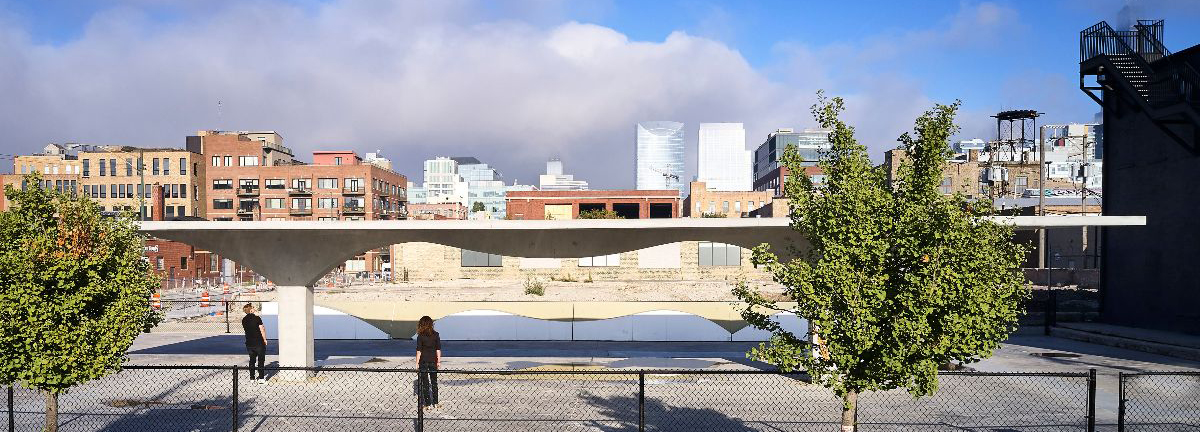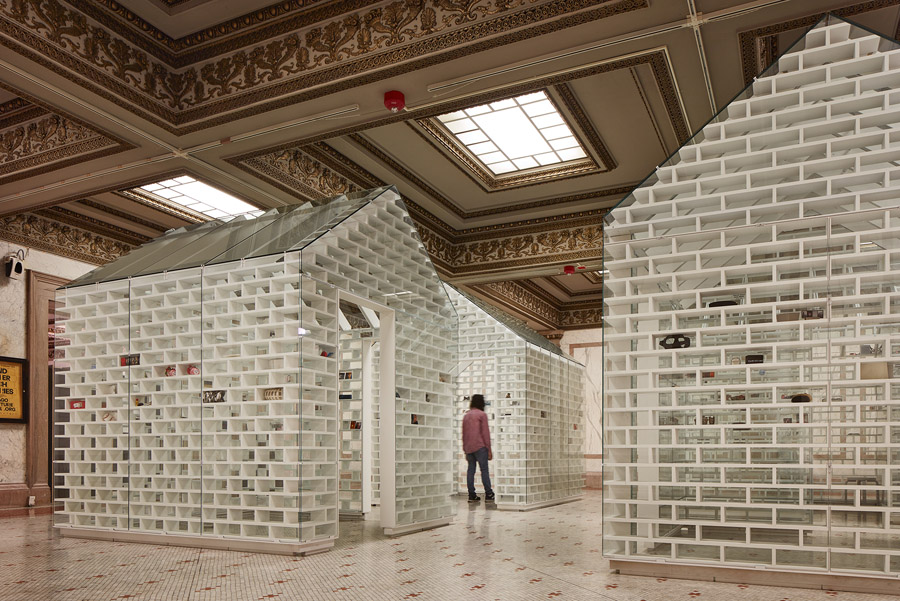Chicago Architecture Biennale 2019: All is connected

Foto: Dave Burk
“…and other such stories” is both the title and guiding principle of the third Chicago Architecture Biennale, which will run until 5 January 2020. The three-curatorial trio comprising Yesomi Umolu, Sepake Angiama and Paulo Tavares have brought together more than 80 participants from 22 different countries; their projects will examine architecture with respect to social, political and environmental issues. The events will take place at the historical Chicago Cultural Center, which will act as a main location, and over 50 other venues around the city.
... and other such stories
One thing quickly becomes clear to visitors when they look at the contents of the Biennale: anyone looking for the great themes in architecture will search in vain here. But the great themes are not what concern the organizers. The third Biennale was inspired by Chicago itself. It is devoted not only to the city’s significant architectural heritage, but also examines the conditions that have left their mark - and will continue to leave their mark - on urban development in Chicago. CAB 2019 aims to promote a broader perspective of architecture that includes all parameters and is not limited to the design and construction of buildings. Rather, it will address approaches to existing architecture, social aspects, and connections to neighbourhoods, migration and gentrification.
According to the curators’ wishes, the Biennale will bring subjects that are often neglected in “normal” discussions of architecture into the mainstream. They want to initiate a discussion, a critical examination of how architecture shapes culture, history and nature. Furthermore, they wish to address the extent to which it is possible for the built environment to contribute to a more sustainable, equitable future.
Interactive and discursive
Topics overlap in most of the projects presented at the Chicago Cultural Center. The (built) environment melds with citizen participation, for instance in the How Together installation by ConstructLab of Berlin, a collaborative international network of architects, designers, artists, sociologists, photographers and gardeners, or in the visual arts as represented by renowned Chicago artist Theaster Gates in order to make real, social upheavals visible. The mob behaviour of people on the internet is reflected in films by Clemens von Wedemeyer, a professor of media art from Leipzig.
Biennale venues can be found in many other parts of town, for instance the Bronzeville district. This area is home to the Anthony Overton School, which was closed in 2013 after more than 50 years of operation. In 2015, the building was bought by a non-profit organization devoted to urban development. The following year, it was added to the national registry of historical monuments. The old school will now become a place for art, workshops and research that includes local residents - particularly young people - and gives the district a new identity.
The National Public Housing Museum has committed itself to preserving the last remaining block of the former Jane Addams Homes, a residential project run by the Chicago Housing Authority. The buildings were erected in 1938 and inhabited until 2002. In cooperation with the Keleketla collective of Johannesburg, South Africa, the museum will present outdoor live sound installations and performances. The building is to be spared demolition and transformed into a place honouring the stories of former residents and public housing.
Pavilion and Skyscraper
More than 100 local partners are supporting the CAB. These include the architecture studio Skidmore, Owings & Merrill (SOM), who have created Stereoform Slab. This concrete pavilion in Chicago’s West Loop is the prototype of a structure constructed by robots; it also promotes the reduction of CO2 consumption in concrete constructions. Other partners are the planners from Studio Gang, who are currently completing the Vista Tower in direct proximity to the new Chicago Architecture Center. Upon its inauguration in 2020, the 365-metre residential and hotel complex located right where the Chicago River flows into Lake Michigan will be the city’s third-tallest building.
Further must-sees are current exhibitions hosted by CAB partners, such as the Graham Foundation’s installation Unraveling Modern Living by Tatiana Bilbao Estudio and the Art Institute of Chicago, which is featuring six Mexican modernists in In a Cloud, In a Wall, in a Chair: Six Modernists in Mexico at Midcentury.
Visits to official venues of the Biennale are free of charge. Todd Palmer, executive director of the event, estimates that 500,000 people will visit the CAB, a number similar to that of two years ago.
CAB 2019: All Events and Venues at a Glance

















